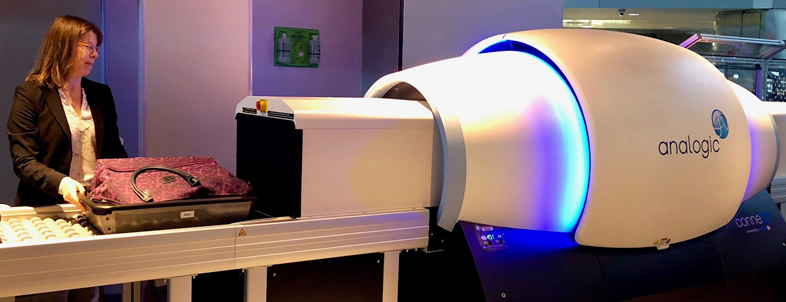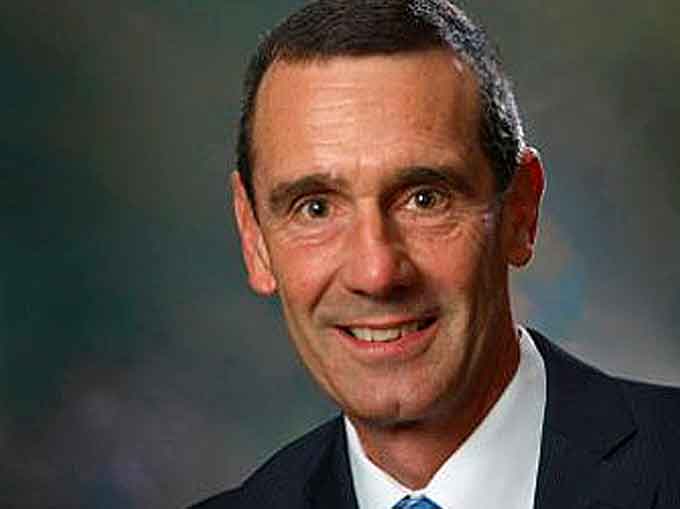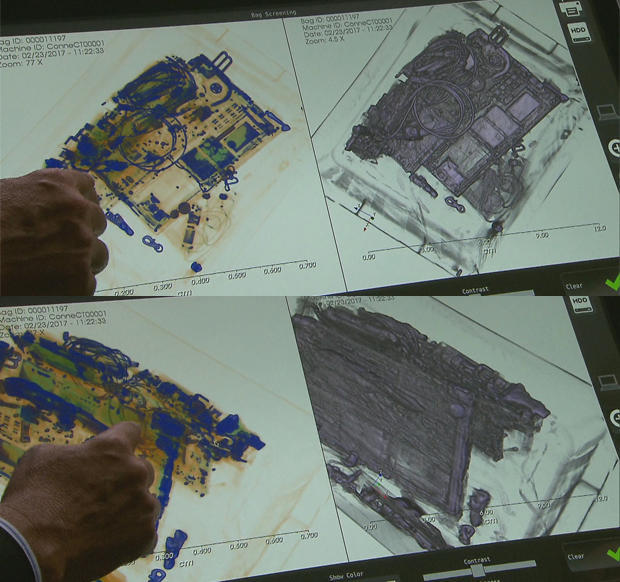
The Transportation Security Administration (TSA) has revealed plans to test computed tomography scanners (CT), a state-of-the-art 3-D technology at select airport checkpoints across the United State.
As the agency continues to raise the baseline for aviation security, the new technology intends to enhance critical explosives and other threat items detection capabilities at airport checkpoints.
 The Analogic ConneCT aviation checkpoint security screening system applies sophisticated algorithms for the detection of explosives and creates a 3-D image that can be viewed and rotated on three axes for thorough visual image analysis by a TSA officer.
The Analogic ConneCT aviation checkpoint security screening system applies sophisticated algorithms for the detection of explosives and creates a 3-D image that can be viewed and rotated on three axes for thorough visual image analysis by a TSA officer.

“TSA is committed in getting the best technology to enhance security and improve the screening experience,” said TSA Administrator David Pekoske.
“Use of CT technology substantially improves TSA’s threat detection capability at the checkpoint.”
“By leveraging strong partnerships with industry, we are able to deploy new technology quickly and see an immediate improvement in security effectiveness.”
(See ConneCT Checkpoint CT Scanner in Action. Courtesy of Analogic and YouTube)
Checkpoint CT technology should result in fewer bag checks.
In the future, passengers may also be able to leave laptops and liquids in their carry-on bags.
TSA plans to have up to 40 units in place at airports around the nation by the end of the year, along with 16 units at federal testing facilities.
More than 145 will be in airports by the end of fiscal year 2019.

The initial 15 units are being deployed to the following airports, with other airports receiving units in the coming months:
- Baltimore-Washington International Airport (BWI)
- Chicago O’Hare International Airport (ORD)
- Cincinnati/Northern Kentucky International Airport (CVG)
- Houston Hobby Airport (HOU)

- Indianapolis International Airport (IND)
- John F. Kennedy International Airport (JFK)
- Boston Logan International Airport (BOS)
- Los Angeles International Airport (LAX)
- McCarran International Airport (LAS)
- Oakland International Airport (OAK)
- Philadelphia International Airport (PHL)
- Phoenix Sky Harbor International Airport (PHX)
- San Diego International Airport (SAN)
- St. Louis Lambert International Airport (STL)
- Washington-Dulles International Airport (IAD)
TSA began testing CT in 2017 at Phoenix Sky Harbor International Airport and Boston’s Logan International Airport.
A third unit was recently deployed to John F. Kennedy International Airport.
(The TSA is working with American Airlines to bring about a new scanning machine that may change the experience of security lines for many travelers. Courtesy of TomoNews US and YouTube. Posted on Jul 25, 2018.)
For the most up-to-date information about CT, visit TSA’s Emerging Technologies page.
Learn More…
AA & Analogic to Expand State-of-the-Art Screening Tech (See Video)
















